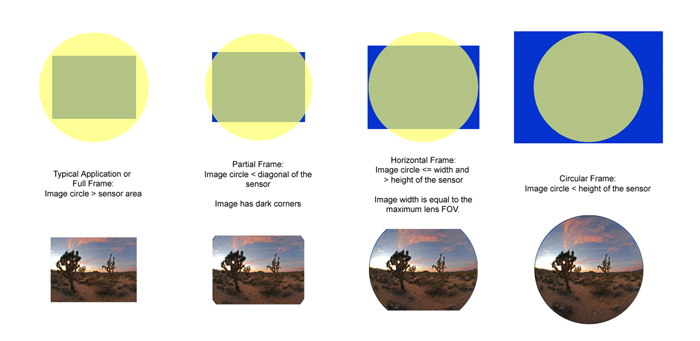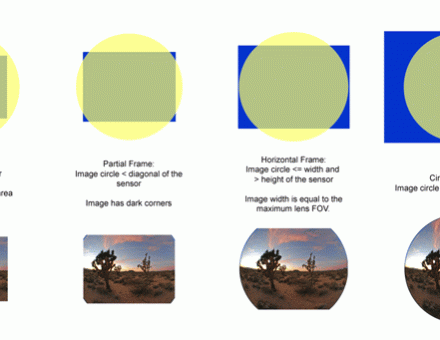One of the most important specifications for an imaging lens is the image circle. So what is the image circle of a lens? This question is often asked without a clear definition of the image circle. This article will attempt to clarify the concept of image circle and discuss what’s to be expected from real-world lenses in terms of image circle.

When a lens is first designed, the designer must choose a maximum field of view or image height in the setup. The lens performance is optimized within this maximum field angle or image height. The relative illumination at this max. image height is in the range of 50%-80% for most lenses. Very little performance consideration is given to any field points beyond this image height. We can call the max. image height x 2 the “nominal” image circle. However, this does not mean that beyond the max. image height, the image performance of the lens drops to “zero”. Specifically, the relative illumination can still be significant beyond the nominal image circle. And also, the MTF of the lens will still be meaningful beyond the nominal image circle. Let us define “true” image circle as the diameter of the image plane of the lens when the relative illumination reaches 10%.
From this definition, it is clear that the true image circle is greater than the nominal image circle. The question is, by how much? The answer depends on the specific lens design. We can approach this problem in two ways:
- We calculate the relative illumination curve beyond the max. image height once the actual clear apertures of all lens elements are finalized after opto-mechanical design. From this data, we can calculate the image height where the relative illumination falls to 10%.
- After the real lenses are built, we can measure the true image circle by using an oversized sensor. Then we can measure the true image circle by determining the 10% intensity pixel positions. This requires that we use a sensor with a linear response.
Based on real-world testing, we can make the following observations:
- For lenses having large field angles, such as fisheye lenses, the true image circle is about 10-15% greater than the nominal image circle.
- For telephoto or narrow field-of-view lenses, the true image circle is considerably greater. A value of 25-30% is not uncommon.
- For mid-field-of-view lenses, the true image circle overfill depends on the design details. Compact designs with short total track lengths tend to have less overfill. An overage value 15-25% is not unusual.
- We recommend that you test a sample of real lenses to determine if the true image circle is large enough for your applications instead of relying on the spec sheet nominal image circle to make the lens selection.


One Response